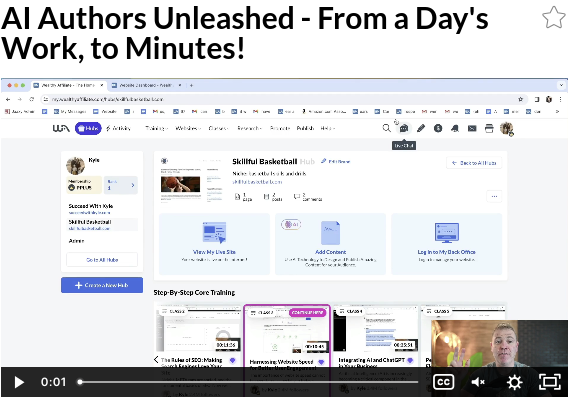
AI will bring your business to the next level.
Revolutionizing Customer Insights: The Impact of AI on Business Success
Understanding customers is the cornerstone of success in today’s dynamic business landscape. With the emergence of Artificial Intelligence (AI), this understanding has taken on new dimensions, empowering businesses to delve deeper into customer insights and analytics like never before.
Unlocking the Potential of AI in Customer Experience
AI technologies, including machine learning and natural language processing, have redefined how businesses harness customer data. Through AI-driven algorithms, companies can now sift through vast volumes of data in real time, unveiling hidden trends and patterns that were once elusive. This transformative capability enhances understanding and enriches customer experiences, fostering stronger connections between businesses and their clientele.
Streamlined Data Gathering
Gathering relevant customer data is paramount for deriving actionable insights. With AI, this process has become streamlined and more efficient than ever. AI-powered tools automate data collection from diverse sources, spanning customer interactions, social media, website visits, and online transactions. This automated approach saves time and ensures accuracy, laying a solid foundation for insightful analysis.
Analyzing with Precision
Once data is amassed, AI algorithms swing into action, analyzing it at unparalleled scale and speed. These algorithms unearth correlations, detect patterns, and flag anomalies, offering businesses invaluable insights into customer behaviour and preferences. Leveraging advanced analytics techniques like predictive modelling and segmentation, AI empowers businesses to tailor their strategies with surgical precision, aligning offerings with customer needs and desires.
Deriving Actionable Insights for Growth
The ultimate aim of customer insights and analytics is to drive business growth through actionable intelligence. AI plays a pivotal role in this endeavour, furnishing businesses with actionable recommendations and predictive insights. For instance, AI algorithms can pinpoint customer segments ripe for targeted marketing campaigns or forecast churn before it occurs, enabling proactive interventions. Armed with such insights, businesses can make informed, data-driven decisions that propel them ahead of the curve.
Benefits of AI in Customer Experience and Insight
Embracing AI in customer insights yields manifold benefits:
- Enhanced Personalization: AI enables businesses to deliver tailor-made experiences, catering to individual preferences and needs.
- Heightened Customer Engagement: By deciphering customer data, AI identifies avenues for deeper engagement, fostering enduring relationships.
- Optimized Resource Allocation: AI-driven insights empower businesses to allocate resources judiciously, maximizing ROI by focusing efforts where they yield the most impact.
- Proactive Decision-Making: AI equips businesses to anticipate customer needs and preemptively address challenges, positioning them as frontrunners in their industries.
- Continuous Improvement: With AI, businesses can perpetually refine their strategies, leveraging evolving customer data to stay ahead of the curve.
Ethical Imperatives in AI-driven Insights
While AI offers immense potential, ethical considerations must underpin its deployment. Businesses must uphold privacy regulations, safeguarding customer data with utmost diligence. Transparency and consent are non-negotiable, fostering trust and credibility in customer relationships.
In the realm of data-driven decision-making, customer insights and analytics are indispensable for business success. With AI as a formidable ally, businesses can glean profound insights from customer data, fueling growth and innovation. By embracing AI in customer experience and insights, businesses not only unlock new avenues for growth but also fortify their positions as customer-centric pioneers in their respective domains.
Ethical Considerations
While AI brings immense benefits, it is crucial to address ethical considerations when dealing with customer data. Businesses must ensure compliance with privacy regulations and prioritize the security and confidentiality of customer information. Transparency and consent are paramount in building trusting relationships with customers.
In the era of data-driven decision-making, customer insights and analytics have become indispensable for businesses seeking to stay competitive and meet customer expectations. With AI-powered tools and algorithms, businesses can gather and analyze customer data more efficiently than ever before, deriving actionable insights that drive growth and success. By embracing AI in customer insights, businesses can unlock a wealth of opportunities to enhance customer experiences, optimize marketing strategies, and make data-driven decisions that propel their organizations forward.

One of the most compelling aspects of the article is the discussion on how AI algorithms can predict customer churn before it occurs, enabling businesses to act preemptively. This proactive capability is a game-changer it doesn’t just react to customer behavior but anticipates it, giving businesses the strategic edge they need in a fiercely competitive environment. By identifying at-risk customers early, companies can craft targeted interventions to retain them, reducing revenue loss and boosting long-term loyalty.
What tools or metrics are most effective in accurately predicting customer churn using AI? And how can smaller businesses, with limited resources, start incorporating these AI-driven strategies into their customer engagement models?
Hi Raven,
Thank you for the insightful comment and great questions! Let me share some thoughts on how AI can help predict and prevent customer churn.
The ability of AI algorithms to anticipate customer churn before it happens is indeed a game-changer. By analyzing vast amounts of customer data and identifying patterns that signal churn risk, AI enables a proactive approach to customer retention. This allows companies to craft personalized interventions for at-risk customers, boosting loyalty and reducing revenue loss.
Some of the most effective AI techniques for churn prediction include:
Predictive analytics that forecast churn likelihood based on historical customer behaviour
Sentiment analysis to detect negative feedback or dissatisfaction in customer communications
Behavioural tracking to monitor changes in product usage or engagement that may indicate churn risk
Machine learning models are trained on past churn data to calculate the probability of each customer churning
The telecom industry, which generates huge volumes of customer data daily, has seen particular success applying machine learning for churn prediction. But AI-driven churn prevention is highly relevant across industries like SaaS, e-commerce, banking and more that rely on customer retention.
For smaller businesses with limited data science resources, the key is to start with the customer data you do have (like CRM and product usage data, support tickets, NPS scores, etc). Much of this data can be exported to train basic churn models using open-source ML tools or AutoML platforms. Tracking a core set of churn indicators and testing proactive retention plays is a great way to get started.
Over time, gathering more data and experimenting with AI to personalize the customer experience at scale will yield compounding returns. After all, even a small reduction in churn rate can have an outsized impact on revenue and growth. With the rapid advancement and democratization of AI, customer retention is poised to become an increasingly data-driven discipline that blends human judgment with machine intelligence.
Eric
Hi Eric
Understanding your customers is crucial for business success—and AI makes it faster and easier than ever. With tools like machine learning, businesses can now gather and analyze customer data in real time, spotting patterns and trends that help them personalize experiences and make smarter decisions.
AI saves time by automating data collection from places like websites, social media, and transactions. It helps businesses predict customer behavior, improve engagement, and even prevent customer loss.
Key benefits include better personalization, stronger relationships, efficient use of resources, smarter marketing, and constant improvement.
Most importantly, ethical use of AI—respecting privacy and gaining consent—builds trust. Used responsibly, AI gives businesses a clear edge while keeping the customer front and center.
Thank you for sharing
Elke
AI is simply amazing. You have covered many essential points here. I like how AI algorithms can anticipate client/customer behavior. This does create a competitive edge for businesses small and large. This has a tremendous overall effect on a buiness in terms of retention and brand loyalty. Personalizing the customer/client experience with these AI techniques and strategies is most definitely a game changer. Lots of helpful info here.
I’m quite new to all this, but this post really opened my eyes to how powerful AI can be when it comes to understanding customers better. It’s amazing how much can be done now with data, from predicting behaviour to tailoring experiences. I’m especially intrigued by how AI can help spot trends in real time. Still have a lot to learn, but this definitely got me thinking about how it could be applied even in smaller businesses. Thanks for the insightful read!